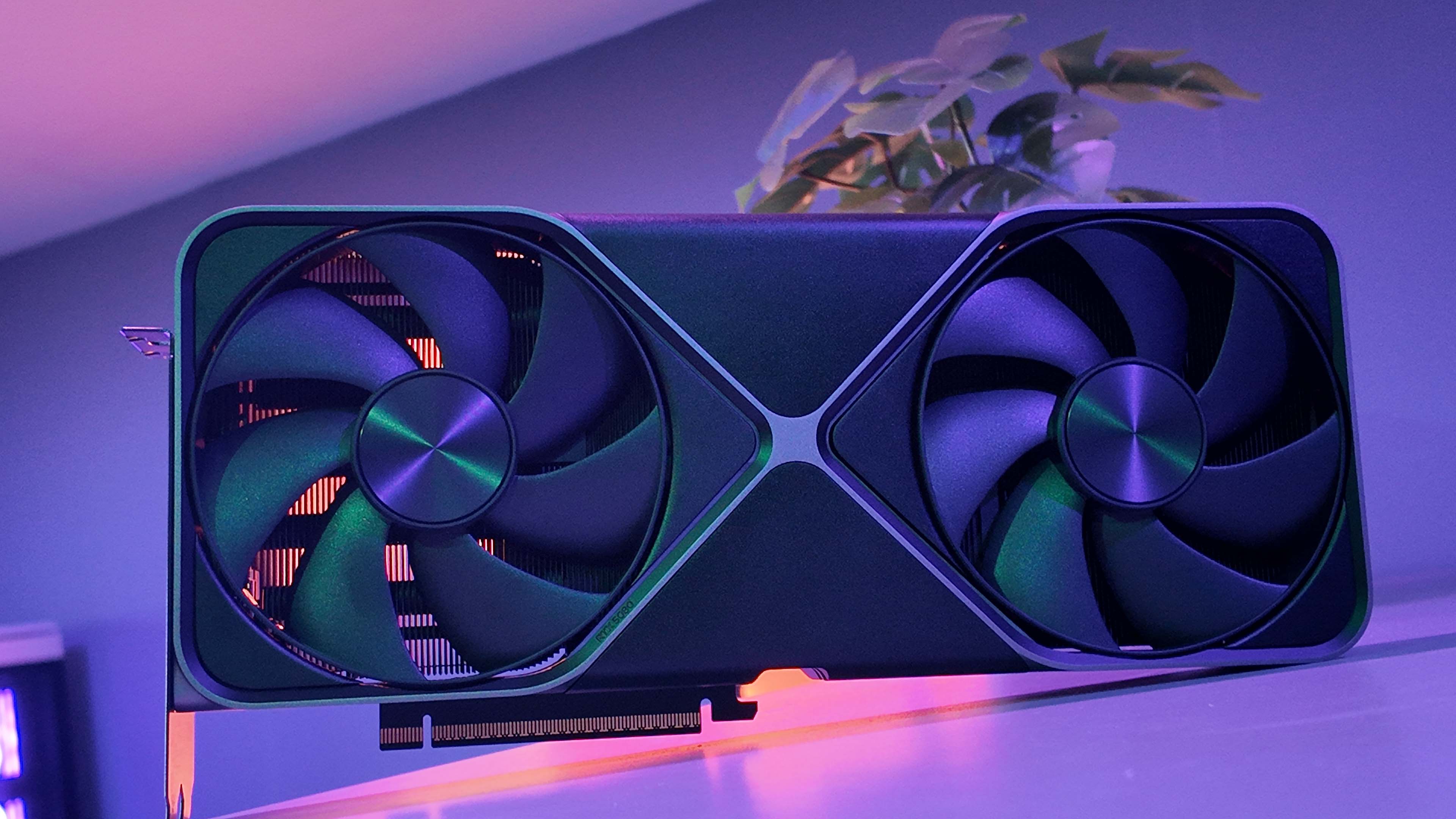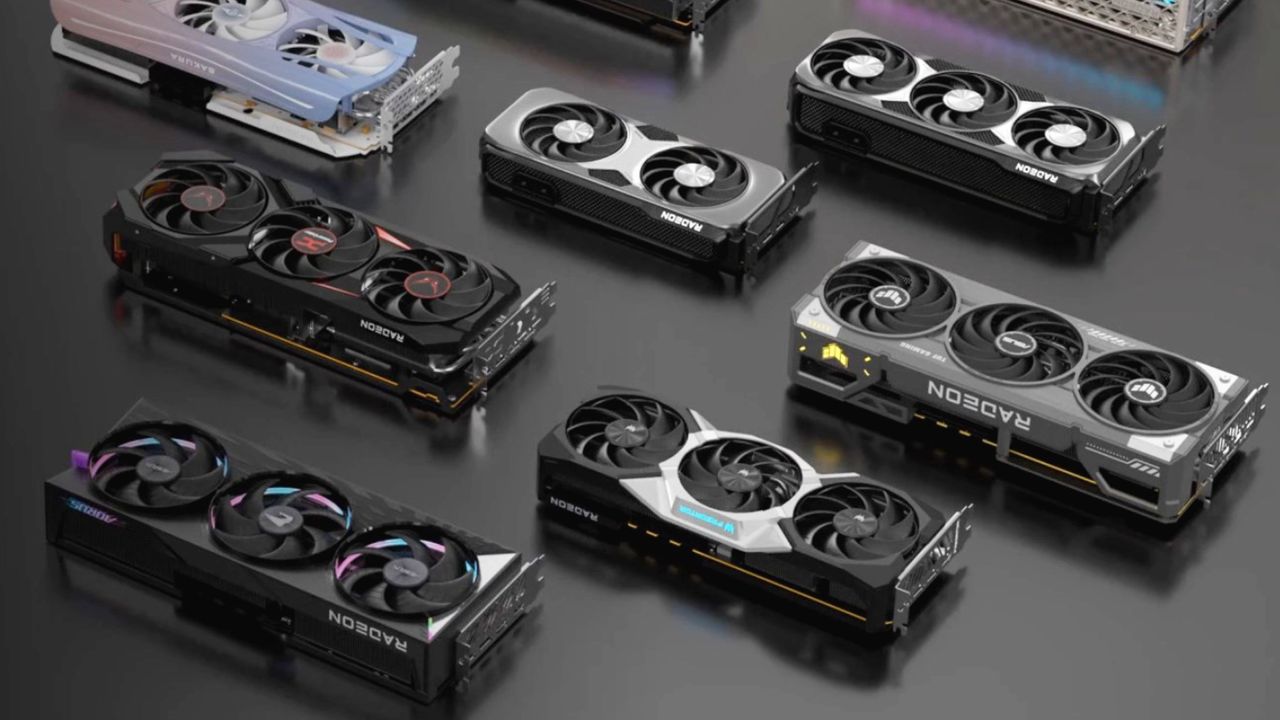AMD is getting back into the enthusiast class GPU game. So says YouTube outlet Moore’s Law is Dead. Perhaps even more excitingly, it reckons AMD is cooking up another new GPU with Nvidia RTX 5080 performance that will sell for just $550.
Obviously, the usual caveats apply. That channel hardly has an immaculate track record. But this “leak” looks particularly plausible, including a purported internal slide from AMD itself. So, let’s get into the details.
In broad brush terms, AMD is said to be planning two main GPUs for its next-gen graphics architecture. Moore’s Law refers to it as RDNA 5, while AMD has previously said it will be moving to a unified architecture for both gaming and AI known as UDNA.
If that’s semantics, the two GPU dies themselves look fascinating. The first, codenamed AT0, is supposedly an absolute monster. It seems to exist primarily as a workstation AI GPU, similar to how Nvidia RTX 5090 are commandeered for running local AI models in workstations, as opposed to its dedicated Blackwell GPUs that go into AI server racks.
But, just as Nvidia’s GB102 GPU can be used for both AI workloads and for gaming in the form of the RTX 5090, AMD’s AT0 will also spawn a pure gaming graphics card. And, despite being a bit cut down from the AI variant, it’s said to still be a beast that should be capable of going up against Nvidia’s next-gen flagship, which we’ll call the RTX 6090 for argument’s sake.
How much of a beast? It’s said to have 154 compute units, even in cut-down gaming form, plus a 384-bit memory bus and 36 GB of GDDR7 memory. For context, AMD’s current top RDNA 4-based gaming graphics card, the Radeon RX 9070 XT, has just 64 compute units.
If you further assume that AMD’s next-gen compute units are likely more performant than RDNA, you’ll have well over double the number of compute units, each with superior performance to those in a 9070 XT. Now, you can see how it’s thought this thing is designed to go up against Nvidia’s next-gen halo gaming GPU.
But what of the other GPU die in this new generation of AMD graphics? Actually, it could be more interesting, still. That is said to carry the same number of compute units or CUs as the 9070 XT, so 64. But they’ll be more capable, especially when it comes to ray tracing, and clock higher, the result of which will be performance somewhere around an RTX 5080.
But here’s the kicker. The target price for this GPU, codenamed AT2, is claimed by Moore’s Law is Dead to be $550. So, that’s RTX 5080 performance for roughly half price. Well, it is in terms of MSRP. Street prices, as ever, are another thing. What’s more, this smaller GPU is said to be slated for use as a graphics chiplet in future high-performance APUs. It could also do duty in future Xbox devices. If true, it will be a very important little graphics chip.
Incidentally, the use of this smaller AT2 die in various applications seems to be the limit of AMD’s “chiplet” strategy for GPUs. A few years ago, the expectation was that AMD would build up all kinds of GPU using small generic GPU chiplets, just as it does with CPUs using CPU core chiplets. But that plan seems to have been dropped, at least for now.
If there’s a snag to all this, it’s the expected release date, which is early 2027 for the desktop graphics cards according to Moore’s Law is Dead. That’s a little disappointing. On the one hand, it maps with the usual two-year release cadence for gaming GPU generations, what with RDNA 4 and the RX 9070 and 9070 XT arriving earlier in 2025.

On the other, RDNA 4 itself was late by that very same cadence, and should have been released in 2024. So, getting things back on track would see these new AMD chips, whether you call then RDNA 5 or UDNA, out in the second half of next year.
Of course, whether it’s late next year or some time in 2027, either way these GPUs are quite a long way out. No doubt much can change in the interim, but AMD will certainly have a pretty clear idea of what it intends to launch for its next generation GPUs at this point.
To hit that late 2026 or early 2027 window, the design of the GPUs will have already been finalised. So, if this leak does indeed come from AMD, there’s every reason to take it seriously.
It’s also worth noting that AMD has form when is comes to launching a true high-end competitor for Nvidia every second or third generation. It opted out of the high end for RDNA 4, and if you recall for the original RDNA generation. But it had a pop with RDNA 2 and RDNA 3, courtesy of the Radeon RX 6900 XT and 7900 XTX GPUs, respectively.
Wind the clock back further, and you’ll find AMD dipping in and out of the high-end gaming segment, pretty much on a whim. Moreover, AMD has made noises in the past about wanting to focus on mainstream gaming, just as it did for RDNA 4, only to turn around the following generation and take a stab at the enthusiast class.
Anywho, we’ll have to see how this all pans out. Plenty of questions remain, even if this leak is accurate. We’ve no idea, for instance, how much effort AMD has put into improving ray tracing for the next gen.
